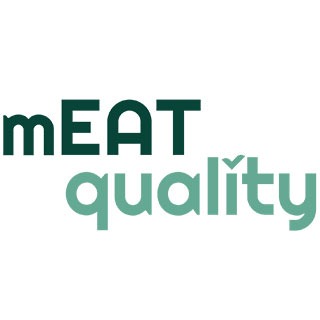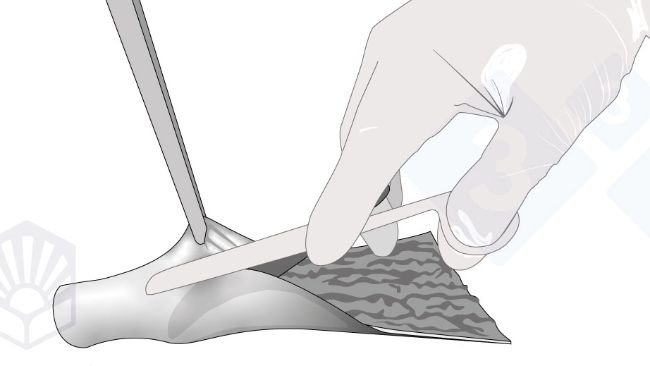
Necropsy manual: Sample collection and laboratory submission
After interpreting the lesions we must proceed to sample collection.
The pig sector events all around the world
Weekly newsletter with all the pig333.com updates
Swine industry news in your email
Pig health: news and articles on PRRS, PCV2, biosecurity, etc, Pig disease guide, atlas of pathology, clinical cases…
Biocheck.UGent is an independent, risk-based, scientific scoring system for assessing the quality of your on-farm biosecurity.
A visual and practical step-by-step guide on how to perform a necropsy on a pig.
All the information about ASF: how to recognize the disease, how it is transmitted, pictures of lesions, latest news, guides, etc.
Description of the most important diseases and conditions in pigs
Images of major swine diseases
Pig disease diagnostic tool
Definition for the most commonly used pig terms
Simulator that calculates the amount of drug to add to the water when using a flow dispenser.
Weekly newsletter with all the pig333.com updates
Pig Prices by countries. Pork production and trade. News of the pig market and the raw materials
The latest slaughter pig prices in the most important pig markets. Check the evolution of the historical prices in charts and in several currencies.
Latest quotations for the main commodities used in pig feed. Historical graphs with the pig price and estimated feed price.
Figures & trends in pig numbers, pork production and pork trade.
Global production and trade data for the most important raw materials
Weekly newsletter with all the pig333.com updates
Articles on nutrition and pig feeding, characteristics of raw materials and additives for pig feed. Prices of raw materials
Latest quotations for the main commodities used in pig feed. Historical graphs with the pig price and estimated feed price.
Technical sheets of the main raw materials and additives used in swine feed. They include a comparison of nutritional values from various sources, product
Global production and trade data for the most important raw materials
Definition for the most commonly used pig terms
Use this tool to diagnose problems with the feed conversion ratio. Click on the flowchart or on the buttons within the text to navigate through the different parts of the tool.
A biweekly newsletter with the latest developments in swine nutrition
Articles on genetics and pig reproduction: genetic improvement, genomics, artificial insemination, use of hormones
Compare production data, calculate the number of sow, nursery, and finishing spaces, and visualize your tasks on the work schedule by type of BMS.
Tool that allows you to calculate the replacement rate in your farm
Definition for the most commonly used pig terms
Use this tool to find out why your farrowing rate is less than ideal. Click on the flowchart or on the buttons found within the text to navigate through the different parts of the tool.
Weekly newsletter with all the pig333.com updates
Management, pig farm management, work planning in each production stage: management in gestation, grow finish, batch farrowing
Compare production data, calculate the number of sow, nursery, and finishing spaces, and visualize your tasks on the work schedule by type of BMS.
Tool that allows you to calculate the replacement rate in your farm
Definition for the most commonly used pig terms
Weekly newsletter with all the pig333.com updates
Design of facilities and equipment for pig farms: building design, climate control, feeding systems, etc.
Biocheck.UGent is an independent, risk-based, scientific scoring system for assessing the quality of your on-farm biosecurity.
Environmental Footprint Calculator along the pork value chain.
Definition for the most commonly used pig terms
Simulator that calculates the amount of drug to add to the water when using a flow dispenser.
Use this tool to explore which slurry management strategy best fits your situation. Click on the flow chart or on the buttons within the text to navigate through the different parts of the tool.
Weekly newsletter with all the pig333.com updates
What makes us stand out is the quality and independence of our contents. Find out about the authors who make it possible. Our goal is to generate a virtual community of advanced users in the sector.

Graduated in Veterinary Medicine from the University of Córdoba in 2007 with Extraordinary and National Awards. Doctor in Veterinary Medicine with International Mention and Extraordinary Doctorate Award by the University of Córdoba in 2012. During her doctoral training she made several stays in the Institute of Virology of the University of Ghent (Belgium), the Centre for Research in Animal Health (Cerdanyola del Vallès, Barcelona) and the Institute of Immunology of the University of Veterinary Medicine in Vienna (Austria). In the latter, she carried out a 2-year post-doctoral stay under the supervision of Doctors Armin Saalmüller and Wilhelm Gerner. In 2015 she joined the Department of Comparative Anatomy and Pathology of the University of Córdoba, collaborating in the research carried out by the AGR-137 research group "Animal Anatomy Pathology". Currently she is also a professor in this department.
Updated CV 05-Mar-2020

After interpreting the lesions we must proceed to sample collection.
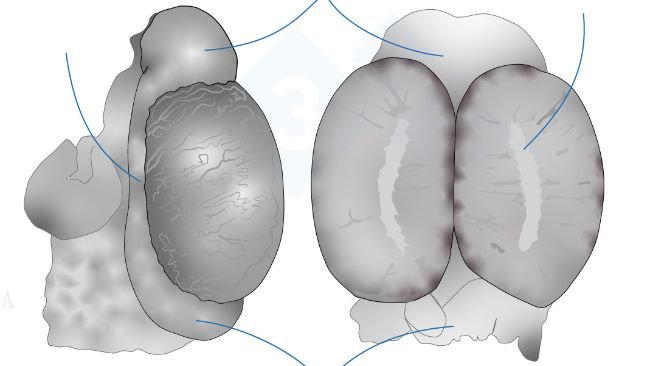
In the fifth installment of the manual we address the examination of the organs of the abdominal cavity.
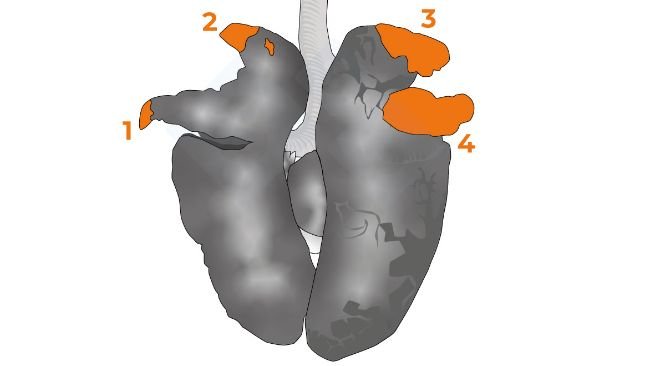
In the fourth installment of the manual, we address examining the thoracic cavity organs.
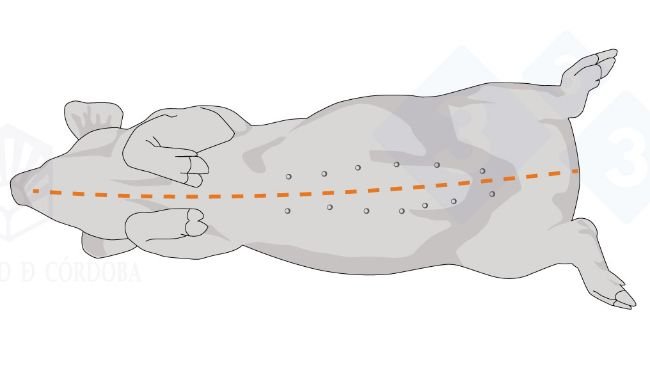
In the first two installments, we covered necropsy in lateral decubitus. In this third installment, we will look at necropsy in the supine position
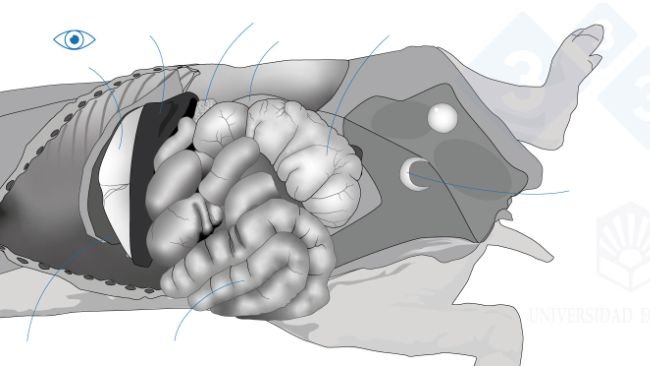
In this second installment, we cover extracting the tongue, trachea, lungs, and heart in one piece. We will extract the organs of the abdominal cavity, both the digestive system and the urinary and genital tracts. In the head, we will access the nasal turbinates, brain, and cerebellum.
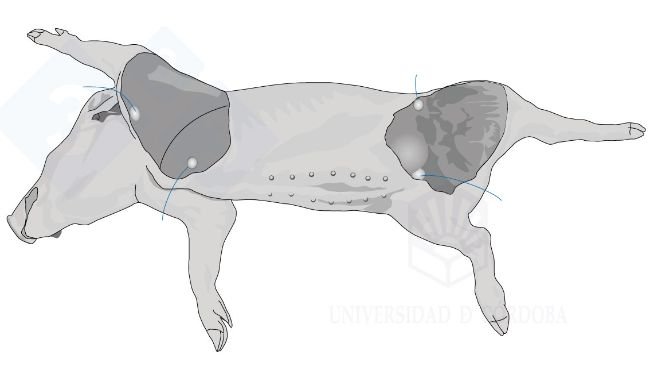
This new section, coordinated by the pathological anatomy team of the University of Cordoba, Spain, will show us, in a very visual and practical way, how to perform a necropsy on a pig.
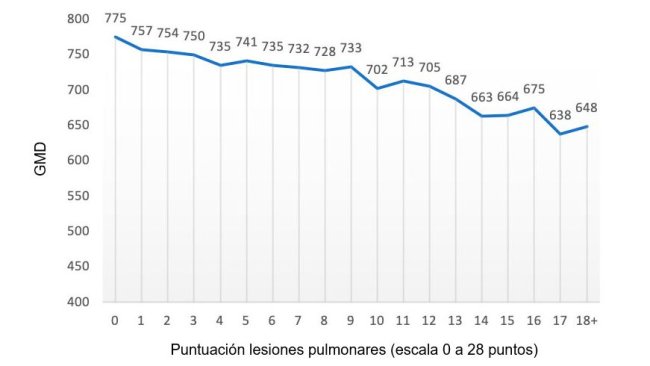
What is the actual effect of pneumonia on the farm's economic performance? What similarity is there between pneumonia and heat stress?

M. hyopneumoniae is involved in most of the co-infections of the porcine respiratory system. How does it act and what effects does it have?

This article describes the principal lesions that characterize the main bacterial pneumonias. Although most are opportunistic agents, there are two primary bacterial agents capable of causing lesions on their own.

A discussion of the different micro and macroscopic lesions caused by PRRSV, PCV-2, swine flu virus, and porcine respiratory coronavirus.

What kind of cells make up the respiratory defense system of pigs? How do they organize and communicate with each other?
Welcome to 333
Connect, share, and interact with the largest community of professionals in the swine industry.
Celebrating 168540Users on 333!
Sign upAlready a member?







